Foreword
Preface
Contents
Contributors
1 Enterprise Knowledge Graph: An Introduction
1.1 A Brief History of Knowledge Graph
1.1.1 The Arrival of Semantic Networks
1.1.2 From Semantic Networks to Linked Data
1.1.3 Knowledge Graphs: An Entity-Centric View of Linked Data
1.2 Knowledge Graph Technologies in a Nutshell
1.3 Applications of Knowledge Graphs for Enterprise
1.4 How to Read This Book
1.4.1 Structure of This Book
1.4.2 Who This Book Is For
1.4.3 How to Use This Book
Part I Knowledge Graph Foundations & Architecture
2 Knowledge Graph Foundations
2.1 Knowledge Representation and Query Languages
2.1.1 RDF and RDFS
2.1.2 OWL
2.1.3 SPARQL
2.2 Ontologies and Vocabularies
2.2.1 Some Standard Vocabularies
2.2.2 schema.org
2.3 Data Lifting Standards
2.3.1 RDB2RDF
2.3.2 GRDDL
2.4 Knowledge Graph Versus Linked Data
2.5 Knowledge Graph for Web Searching and Knowledge Graph for Enterprise
3 Knowledge Architecture for Organisations
3.1 Architecture Overview
3.2 Acquisition and Integration Layer
3.2.1 Ontology Development
3.2.2 Ontologisation of Non-Ontological Resources
3.2.3 Text Integration via Named Entity and Thematic Scope Resolution
3.2.4 Ontology Learning
3.3 Knowledge Storing and Accessing Layer
3.3.1 Ontology-Based Data Access
3.3.2 RDF Stores
3.3.3 Property Graph-Based Stores
3.3.4 Conclusion: Storing Knowledge Graphs Versus Relational Databases
3.4 Knowledge Consumption Layer
3.4.1 Semantic Search
3.4.2 Summarisation
3.4.3 Query Generation
3.4.4 Question Answering
3.4.5 Conclusion
Part II Constructing, Understanding and Consuming Knowledge Graphs
4 Construction of Enterprise Knowledge Graphs (I)
4.1 Knowledge Construction and Maintenance Lifecycle
4.2 Ontology Authoring: A Competency Question-Driven Approach
4.2.1 Competency Questions
4.2.2 Formulation of Competency Questions
4.2.3 Ontology Authoring Workflow
4.3 Semi-automated Linking of Enterprise Data for Virtual Knowledge Graphs
4.3.1 Virtual Knowledge Graph for Knowledge Discovery
4.3.2 Semantic Tagging and Data Interlinking
4.3.3 Usage Scenarios
4.3.4 Conclusion
5 Construction of Enterprise Knowledge Graphs (II)*
5.1 Scenario-Driven Named Entity and Thematic Scope Resolution of Unstructured Data*
5.1.1 Framework Description
5.1.2 Framework Application Evaluation
5.2 Open-World Schema Learning for Knowledge Graphs*
5.2.1 Motivation
5.2.2 BelNet+
5.2.3 TBox Learning as Inference
5.2.4 A Novel Evaluation Framework
5.2.5 Experiments
5.2.6 Experimental Results
5.2.7 Related Work and Summary
5.2.8 Conclusion
6 Understanding Knowledge Graphs
6.1 Understanding Things in KGs: The Summary of Individual Entities
6.1.1 Entity Data Organisation
6.1.2 Summarisation of Entity Data
6.1.3 Conclusion
6.2 Exploring KGs: The Summary of Entity Description Patterns
6.2.1 What Is the Entity Description Pattern?
6.2.2 How Can the Entity Description Pattern Help in Knowledge Exploitations?
6.2.3 Conclusion
6.3 Profiling KGs: A Goal-Driven Summarisation
6.3.1 Motivating Scenario and Problem Definition
6.3.2 Framework Description
6.3.3 Implementation
6.3.4 Application Example
6.3.5 Conclusion
6.4 Revealing Insights from KGs: A Query Generation Approach*
6.4.1 Candidate Insightful Queries
6.4.2 Query Generation Framework
6.4.3 Evaluation of the Query Generation Method
6.4.4 Conclusion and Future Work
7 Question Answering and Knowledge Graphs
7.1 Question Answering over Text Documents
7.1.1 Realising a QA System: Approaches and Key Steps
7.2 Question Answering over Knowledge Graphs
7.2.1 State-of-the-Art Approaches for Question Answering Over Knowledge Graphs
7.2.2 Question Answering in the Enterprise
7.3 Knowledge Graph and Watson DeepQA
7.3.1 What Is Watson DeepQA?
7.3.2 What Are the Knowledge Graphs Used in Watson DeepQA?
7.3.3 How Knowledge Graphs Are Used in Watson DeepQA?
7.3.4 Lessons Learnt from Watson DeepQA
7.4 Using Knowledge Graphs for Improving Textual Question Answering*
7.4.1 A Flexible QA Pipeline
7.4.2 Exploiting External Knowledge (Graphs) for Re-ranking
7.4.3 Evaluation: Impact of Knowledge Graphs in Semantic Structures
7.4.4 Conclusion
Part III Industrial Applications and Successful Stories
8 Success Stories
8.1 A Knowledge Graph for Innovation in the Media Industry
8.1.1 The Business Problem
8.1.2 The HAVAS 18 Knowledge Graph
8.1.3 Value Proposition
8.1.4 Challenges
8.2 Applying Knowledge Graphs in Cultural Heritage
8.2.1 Digital Cultural Heritage and Linked Data
8.2.2 The Challenges
8.2.3 The CURIOS Project
8.2.4 Constructing the Knowledge Graph
8.2.5 CURIOS---A Linked Data Adaptor for Content Management Systems
8.2.6 Presenting and Visualising Cultural Heritage Knowledge Graphs
8.2.7 Collaborative Construction and Maintenance of Cultural Heritage Knowledge Graphs
8.3 Applying Knowledge Graphs in Healthcare
8.3.1 The Problem in Clinical Practice Guidelines
8.3.2 Preparing the Data and Building the Knowledge Graphs
8.3.3 Services Based on the Knowledge Graphs
8.3.4 Contributions to Healthcare Practice
9 Enterprise Knowledge Graph: Looking into the Future
9.1 Conclusion
9.2 Get Started with Knowledge Graphs
9.2.1 A Small but Powerful Knowledge Graph
9.2.2 Troubleshooting
9.2.3 Variations
9.3 What is Next: Experts' Predictions into the Future of Knowledge Graph
9.3.1 Future Visions
9.3.2 Foreseeable Obstacles
9.3.3 Suggestions on Next Steps
Appendix References
Index
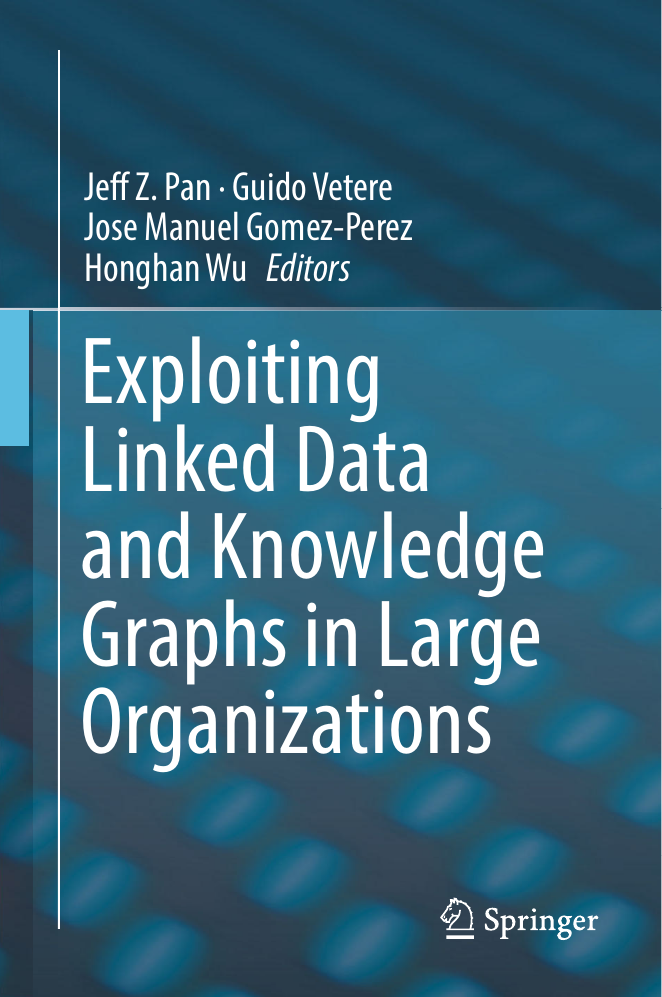
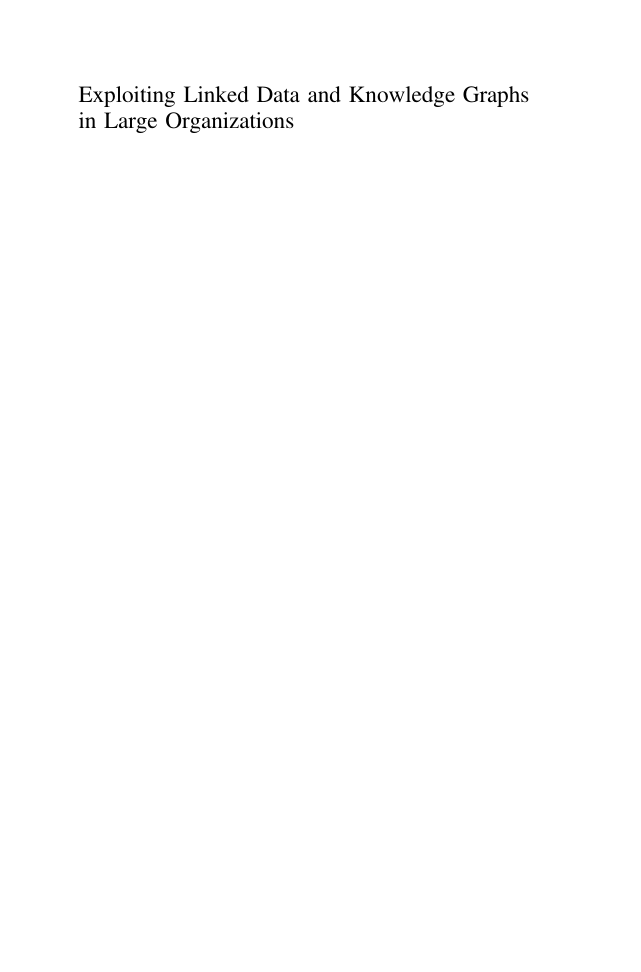
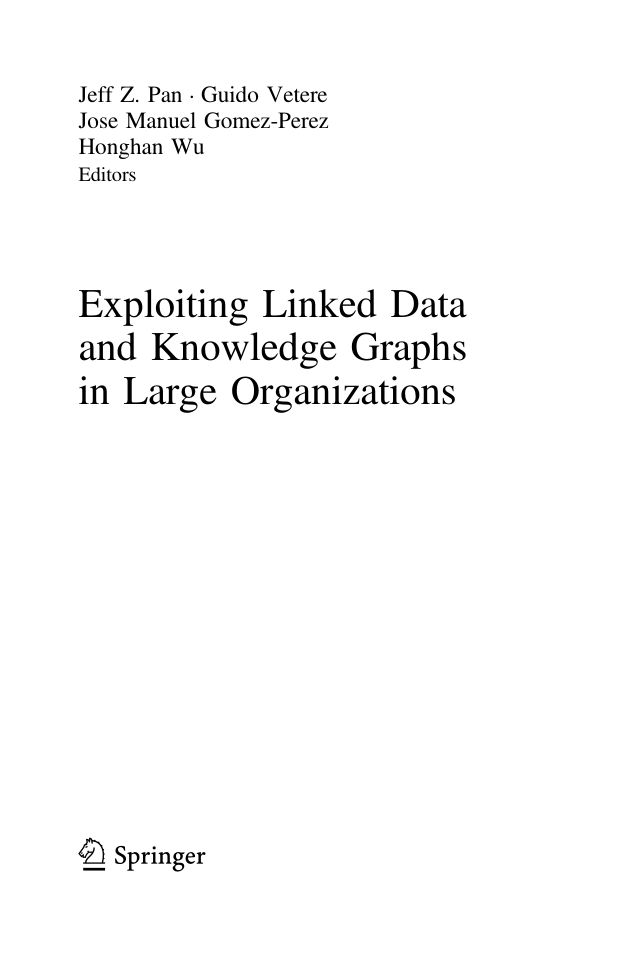
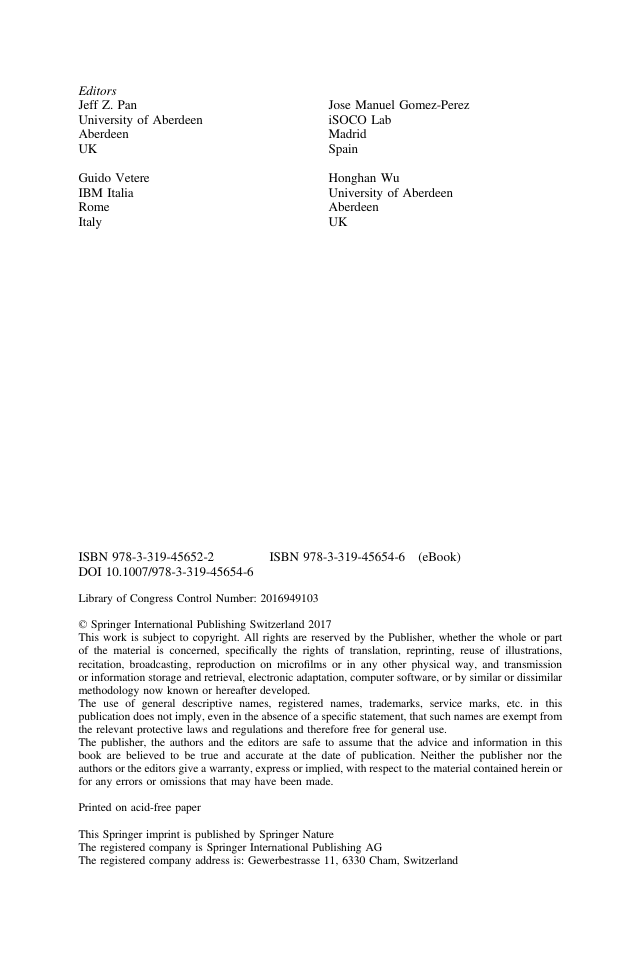
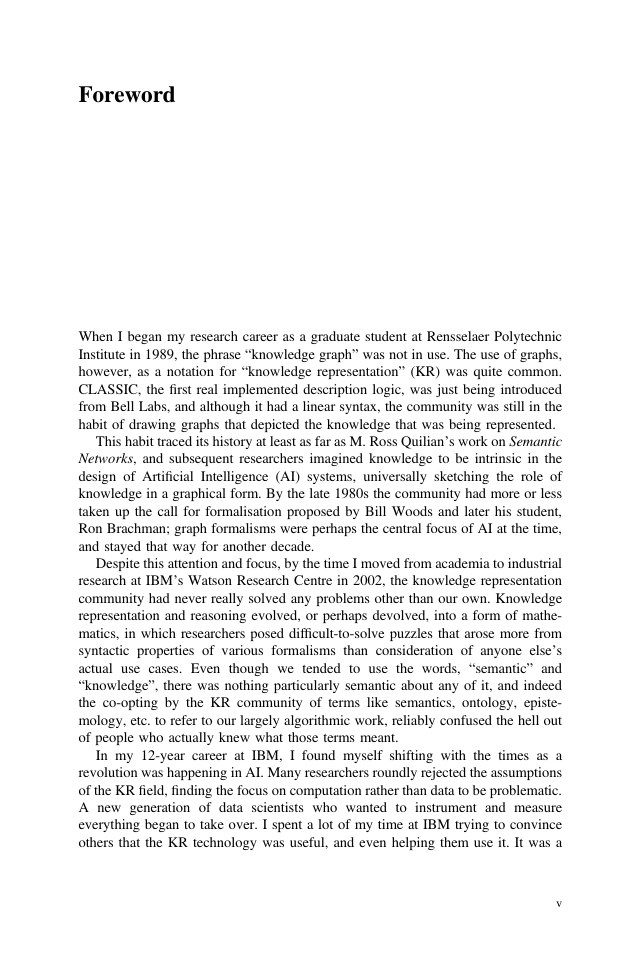
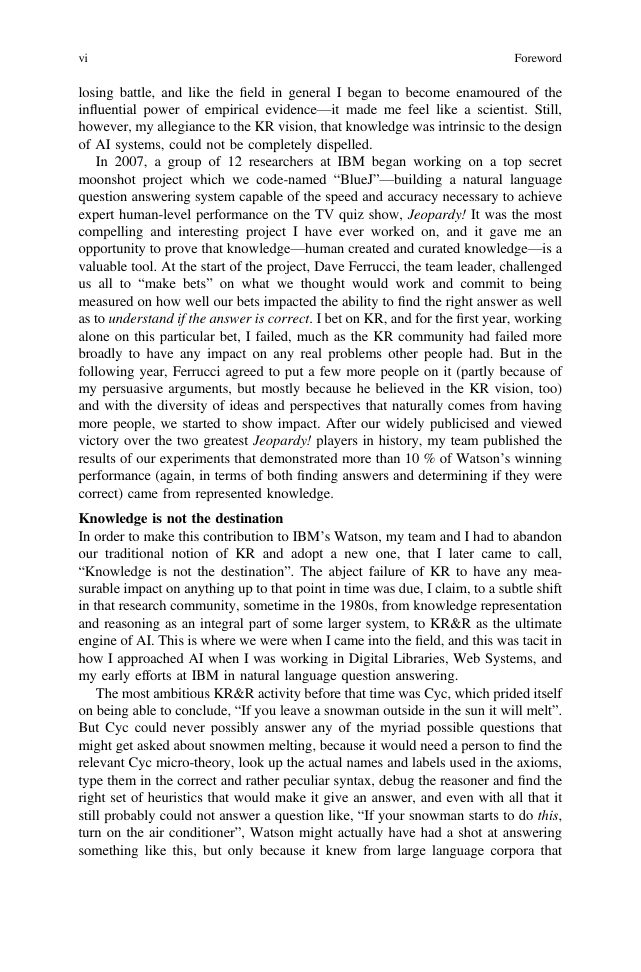
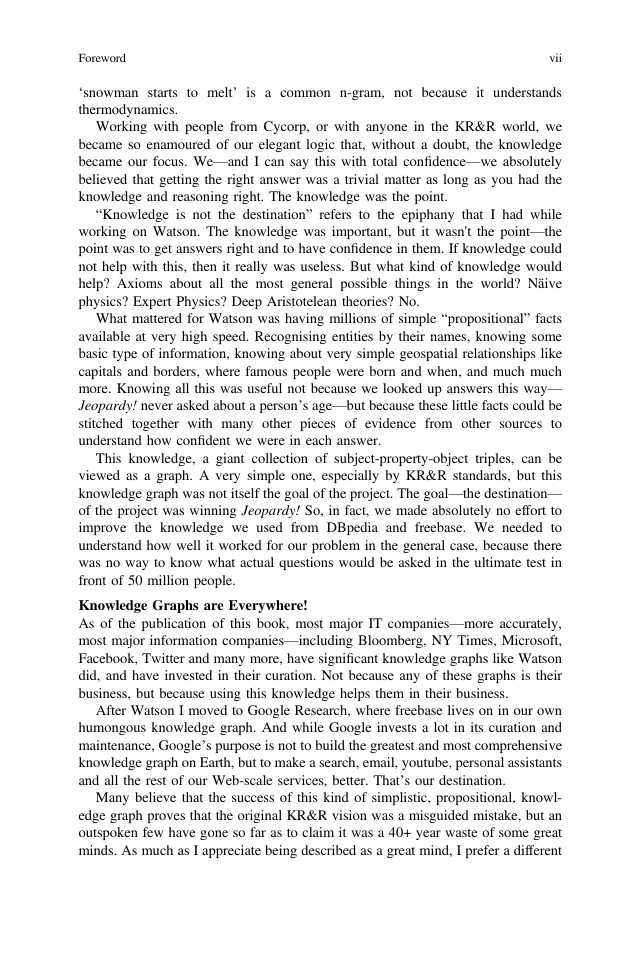









 2023年江西萍乡中考道德与法治真题及答案.doc
2023年江西萍乡中考道德与法治真题及答案.doc 2012年重庆南川中考生物真题及答案.doc
2012年重庆南川中考生物真题及答案.doc 2013年江西师范大学地理学综合及文艺理论基础考研真题.doc
2013年江西师范大学地理学综合及文艺理论基础考研真题.doc 2020年四川甘孜小升初语文真题及答案I卷.doc
2020年四川甘孜小升初语文真题及答案I卷.doc 2020年注册岩土工程师专业基础考试真题及答案.doc
2020年注册岩土工程师专业基础考试真题及答案.doc 2023-2024学年福建省厦门市九年级上学期数学月考试题及答案.doc
2023-2024学年福建省厦门市九年级上学期数学月考试题及答案.doc 2021-2022学年辽宁省沈阳市大东区九年级上学期语文期末试题及答案.doc
2021-2022学年辽宁省沈阳市大东区九年级上学期语文期末试题及答案.doc 2022-2023学年北京东城区初三第一学期物理期末试卷及答案.doc
2022-2023学年北京东城区初三第一学期物理期末试卷及答案.doc 2018上半年江西教师资格初中地理学科知识与教学能力真题及答案.doc
2018上半年江西教师资格初中地理学科知识与教学能力真题及答案.doc 2012年河北国家公务员申论考试真题及答案-省级.doc
2012年河北国家公务员申论考试真题及答案-省级.doc 2020-2021学年江苏省扬州市江都区邵樊片九年级上学期数学第一次质量检测试题及答案.doc
2020-2021学年江苏省扬州市江都区邵樊片九年级上学期数学第一次质量检测试题及答案.doc 2022下半年黑龙江教师资格证中学综合素质真题及答案.doc
2022下半年黑龙江教师资格证中学综合素质真题及答案.doc